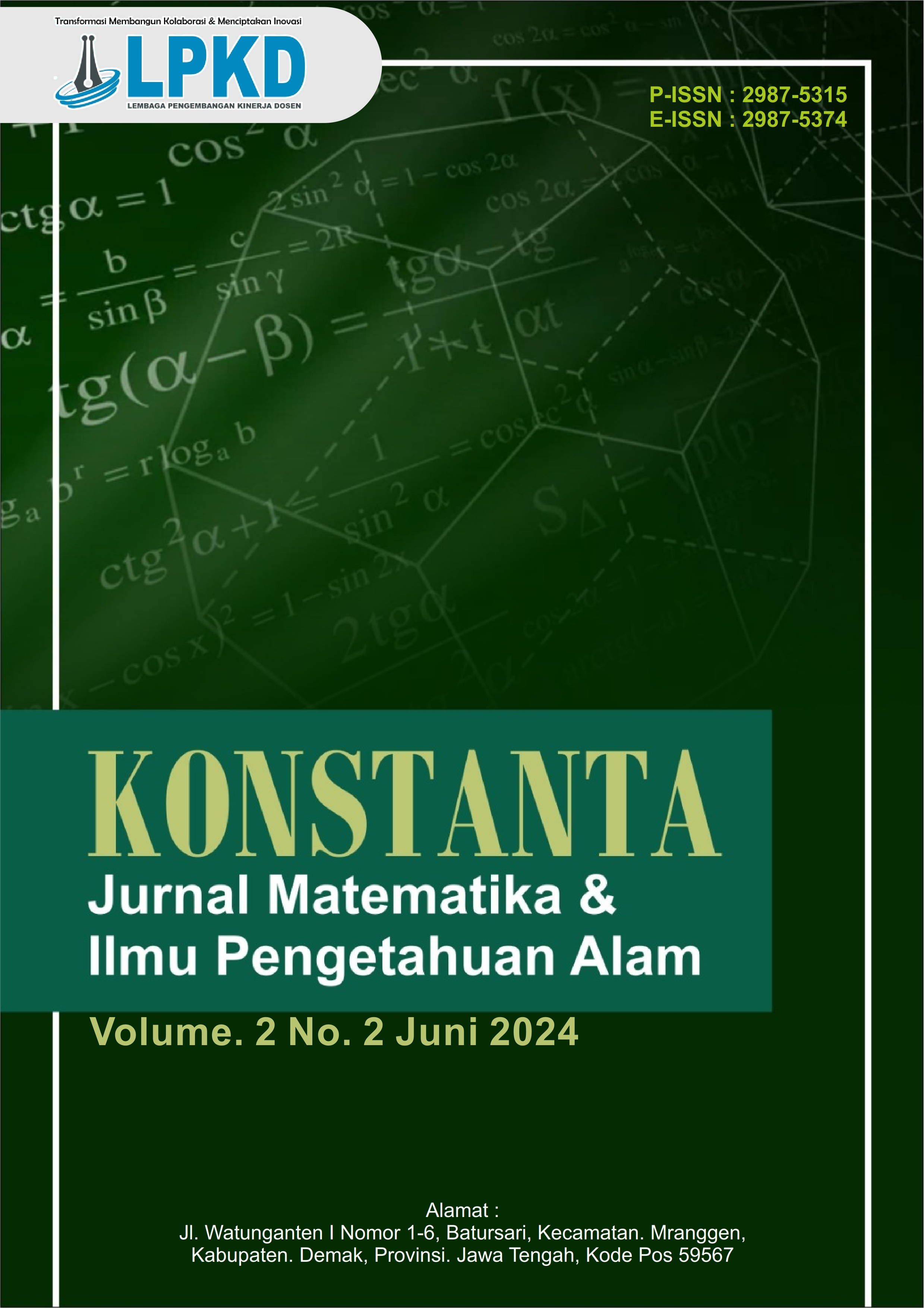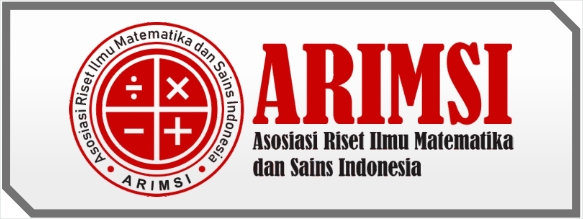Desain Pembelajaran dengan Problem Solving untuk Meningkatkan Kemampuan HOTS Materi Integral
DOI:
https://doi.org/10.59581/konstanta.v2i2.3634Keywords:
Instructional design, Higher Order Thinking Skills (HOTS), problem-solving, instructional strategies, integralAbstract
The instructional design with a problem-solving approach is essential for enhancing students' Higher Order Thinking Skills (HOTS) in secondary education. The aim of this research is to develop an effective and measurable learning process that can improve students' HOTS through a problem-solving approach, with a particular focus on the topic of integrals, which students often find challenging. The research method used in this study is Instructional Design Development, which integrates student needs analysis, clear learning objectives, and the application of innovative and relevant instructional strategies. This research involves a comprehensive analysis of various theories and best practices in problem-based learning, as well as evaluating its effectiveness through classroom trials. The sources of information evaluated include academic journals, textbooks, and previous research reports, providing diversity and validity of data for analysis. This analysis includes the definition of HOTS, HOTS indicators investigated, and the strategies and methods commonly used in problem-solving learning. This research aims to provide a deeper understanding of how instructional design with problem-solving can enhance students' HOTS, particularly in understanding and mastering integral material. The results of this research are expected to significantly contribute to the development of more effective and efficient learning strategies, focusing on developing students' critical and creative thinking skills in education.
References
Ahmad, S., & Kiswanto Kenedi, A. (2018). Instrumen HOTS Matematika Bagi Mahasiswa PGSD.
Brown, C., Williams, D., & Green, E. (2020). Innovative Teaching Strategies for Calculus. London: Springer.
Dick, W., Carey, L., & Carey, J. O. (2015). The Systematic Design of Instruction (8th ed.). Pearson.
Dosinaeng, W. B. N., Leton, S. I., & Lakapu, M. (2019). Kemampuan Mahasiswa dalam Menyelesaikan Masalah Matematis Berorientasi HOTS. JNPM (Jurnal Nasional Pendidikan Matematika), 3(2), 250–264. https://doi.org/10.33603/jnpm.v3i2.2197
Dwi Puspa, R., & Rahman As, A. (2019). ANALISIS KEMAMPUAN SISWA DALAM MENYELESAIKAN SOAL TIPE HIGHER ORDER THINKING SKILLS (HOTS) DITINJAU DARI TAHAPAN PEMECAHAN MASALAH POLYA. Jurnal Kajian Pembelajaran Matematika, 3(2). http://journal2.um.ac.id/index.php/jkpm
Hubers, M. D. (2022). Using an Evidence-Informed Approach to Improve Students’ Higher Order Thinking Skills. Education Sciences, 12(11), 834.
Jones, A., & Smith, B. (2021). Advanced Calculus Techniques. New York: Academic Press.
McLaughlin, J., Turley, M., Lucchesi, R., & Ramlatchan, M. (2021). Four facets of needs assessment and analysis for the design of online learning systems. AECT.
Misu, & Rosdiana. (2013). Pengembangan Teori Pembelajaran Perilaku Dalam Kaitannya Dengan Kemampuan Pemecahan Masalah Matematik Siswa Di SMA. In Jurnal Pendidikan Matematika.
Monariska, E.-. (2019). Analisis kesulitan belajar mahasiswa pada materi integral. Jurnal Analisa, 5(1), 9–19. https://doi.org/10.15575/ja.v5i1.4181
Morrison, G. R., Ross, S. M., & Kalman, H. K. (2019). Designing Effective Instruction (8th ed.). Hoboken: Wiley.
Murray, E. C. (2011). Implementing Higher-Order Thinking In Middle School Mathematics Classrooms.
Reiser, R. A., & Dempsey, J. V. (2018). Trends and Issues in Instructional Design and Technology (4th ed.). New York: Pearson.
Sani, R. A. (2019). Pembelajaran berbasis HOTS (Higher Order Thinking Skills). Tira Smart.
Sitorus, M., et al. (2021). The influence of students’ problem-solving understanding and results of students’ mathematics learning. Frontiers in Education.
Stefaniak, J. E. (2020). Conducting Needs Assessments to Inform Instructional Design Practices and Decisions. EdTech Books.
Tasman, F., & Ahmad, D. (2017). Pemahaman Mahasiswa Terhadap Integral Sebagai Anti Turunan Suatu Desain Riset Pada Kalkulus Integral. Jurnal Eksakta Pendidikan (JEP), 1(1), 9–16.
Vilianti, Y. C., Pratama, F. Y., & Mampouw, H. L. (2018). Description of The Ability of Social Arithedical Stories by Study Problems by Students VIII SMP Reviewed from The Polya Stage.
Whalen, D., & Paez, D. (2020). K-12 students' higher-order thinking skills: Conceptualization and assessment. ScienceDirect.International Journal of Active Learning, 23(1), 23–32. http://journal.unnes.ac.id/nju/index.php/ijal
Yeung, A., et al. (2023). Effectiveness of problem-based learning methodology in undergraduate medical education: a scoping review. BMC Medical Education.
Downloads
Published
How to Cite
Issue
Section
License
Copyright (c) 2024 Konstanta : Jurnal Matematika dan Ilmu Pengetahuan Alam

This work is licensed under a Creative Commons Attribution-ShareAlike 4.0 International License.













